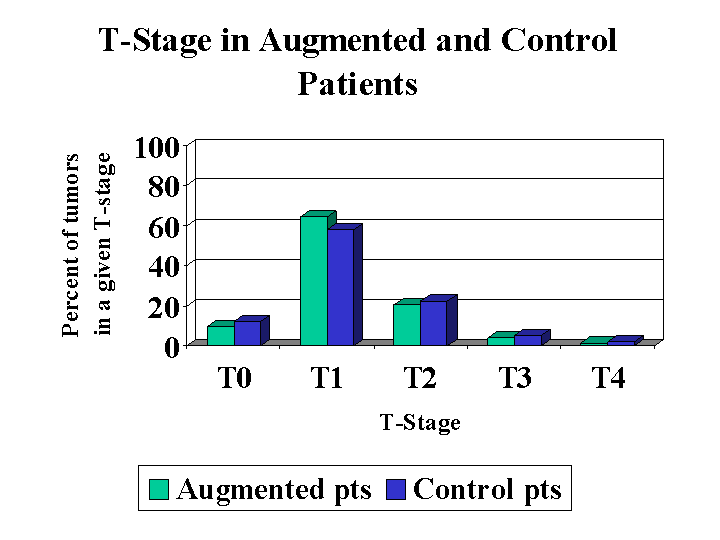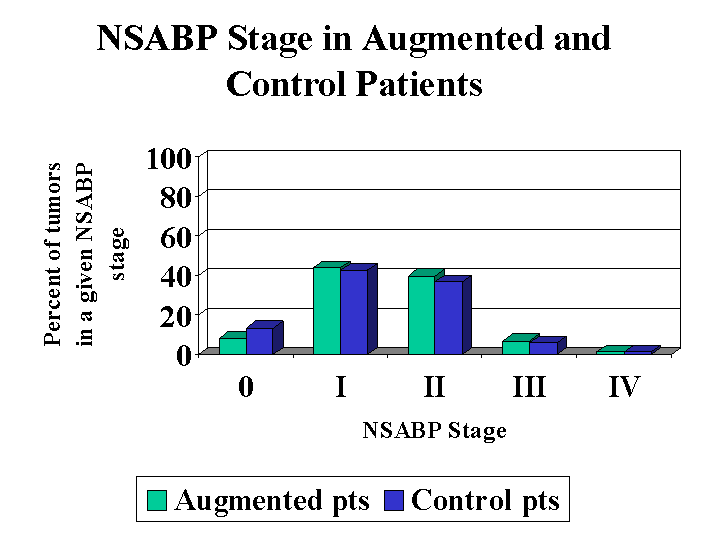Monday, October 27, 2003 - 4:05 PM
3790
Breast Cancer in Patients with Prior Augmentation: Presentation, Stage, and Lymphatic Mapping
Objective:† †††† To determine if breast cancer patients who had prior breast augmentation presented at a more advanced stage than non-augmented breast cancer patients.† To determine the mode of presentation and effectiveness of lymphatic mapping and sentinel lymph node biopsy in this same group of patients.
Methods:††††††† 4,198 breast cancer patients were reviewed from 1987 to 2002.† Patients who had augmentation prior to their diagnosis of breast cancer were compared to a control group of non-augmented breast cancer patients.† Wilcoxon Rank Sum Test was used to compare tumor size, node positivity and stage.† The patientís age at presentation was also compared by the two-sided pooled t test.
Results:††††††††† 76 previously augmented patients were identified with 78 breast cancers. 70% (48/69) were initially detected by palpation, while 30% (21/69) were initially identified mammographically.† 53% (41) underwent mastectomy and 47% (37) underwent a lumpectomy. This compares with a 63.4% (2652/4186) breast conservation rate in the non-augmented population during the same time period.†
The two groups did not differ in regards to (T) size (p = .77) nodal (N) positivity (p = .32) or stage (p = .34).† The mean time between implant placement and a diagnosis of breast cancer was 14 years.† The average age of the augmented patients at breast cancer diagnosis was 49.5 years ( standard deviation9.0 years) versus 57.1years (standard deviation 13.5 years) for the non-augmented patients (p<0.0001).† 49 of the patients underwent lymphatic mapping with a 100% success rate in identifying the sentinel lymph node.† There have been no clinically detected axillary recurrences in the patients who had a negative SLN biopsy. Conclusion:†††† Breast cancer patients who have undergone previous augmentation are more likely to present with a palpable mass. This initial mode of detection does not appear to translate into a larger tumor size or worse prognosis.† Breast conservation and lymphatic mapping can be performed successfully in previously augmented patients.
View Synopsis (.doc format, 90.0 kb)
See more of Breast (Cosmetic and Reconstructive)
Back to Plastic Surgery 2003 Complete Scientific Program
Back to Plastic Surgery 2003 Meeting home


